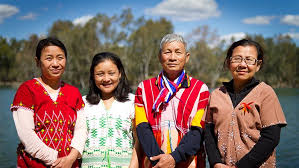The past week was not good for Australia’s human rights records. Last week, there were reports about child abuses in juvenile detention centres in Northern Territory. This week, the human rights violations and daily attack against refugees and asylum seekers in Nauru cover the news headlines.
Australia’s offshore asylum processing centres and human rights abuses had already been reported by the Guardian and other major international newspapers before this joint undercover investigation by Human Rights Watch and Amnesty International came out. Both organisations claimed that they were denied access to the facilities by the authorities numerous times. The current government’s offshore detention centres and Operation Sovereign Borders (OSB) have long been a big elephant in the room when it comes to Australia’s roles for international protection.
This coming September, the United Nations General Assembly holds a Summit for Refugees at its headquarter in New York. Heads of State and Government are invited, including Australia, and the US President Obama host the Leaders’ Summit on refugees which will call for all states to pledge new commitments to international protection of refugees.
Australia respects, protects and promotes human rights as universal values. What it does internally, however, is quite different from what it promotes outside the country as one UN official says in a closed-door workshop.
Australia has a well-managed migration programme overall with the annual intake of 13,750 refugees and other migrants on humanitarian grounds. Based on UNHCR 2015 figures, Australia stands at Australia is ranked 25th overall, 32nd per capita and 47th relative to total GDP, according to the Australian Refugee Council. There are 1,367 in Nauru (496) and Manus Island (898) as of 30 April 2016. The numbers are tiny, compared to the numbers of refugees Europe has to deal with. It is manageable budget-wise and accommodatable capacity-wise onshore. Australia’s spending on running the offshore detention centres and other humanitarian deals with those developing countries that agreed to receive some of those unwanted migrants in Australia’s soil.
The Department of Immigration and Border Protection (DIBP) is acutely aware of the issue. However, there seems to be no political will to respond to this humanitarian crisis in Australia–funded offshore programmes in its poor neighbours, as a responsible regional player and as a democratic and developed country many Asians look up to.
We need to worry about the decline of human rights standards in the Asia-Pacific and lost moral reputation of Australia as a human rights harbinger in the region. International society, many in Asia such as Indonesia and India, criticised Australia’s inadequate treatments of refugees, asylum seekers and juvenile prisoners at the UN. Australia has lost its moral reputation quite considerably especially after the military-led OSB and offshore processing that still continue.

The only way to recover its lost reputation internationally before the September Summit in New York is to come up with an ad hoc humane solution to resettle these 1,300 refugees and asylum seekers in a safe environment, especially for women and children. The difficult question is where. Which state, town or suburb is willing to take them?
There are great success stories of refugees settled in Australia’s onshore. For example, Nhill in rural Victoria has settled around 150 Karen refugees from Myanmar with the support from local businesses, service providers and community leaders. The Karen community in Nhill now contribute considerable to the local economy that created jobs for them.
This policy, however, will face strong resistance by narrow-minded nationalists. Ten years ago, James Treloar, a Tamworth councillor, strongly opposed to the settlement of 5 Christian Sudanese refugee families, depicting them as “lawbreakers’ and potential sex offenders. Now with Pauline Hanson elected, more of these voices against refugees gain popularity and dominate the public debate, attracting the economically strained lower-middle class to join the sentiment. This has become a global phenomenon, first in the UK and now in the US.
In the 2013 Federal Election, the Green Party’s campaign pledge was to close down offshore detention in Manus Island and Nauru, which has disappeared in the recent campaign. During the 2016 election, a Labour MP candidate for Melbourne, Sophia Ismail, challenged the leadership’s position on offshore processing with no vail. No mainstream incumbent Labour or Green party MPs have come up with a brilliant solution or alternative to the current government’s offshore asylum policy. Releasing them to the community, giving them one-off amnesty and making them legal to stay, or granting them temporary protections onshore so that they have access to basic education and healthcare are open for public debates. Track II discussions are on-going. DIBP and the Lowy Institute have co-organised a closed-door workshop on the topic in June 2016.
Giving refuges and asylum seekers complementary pathways is a plausible solution. Refugees with skills can apply for regular economic migration routes and their skills meet local needs. There is a moral question on taking only those with skills. For those without skills, vocational training centres and schools for children can be offered on humanitarian and compassionate grounds.

The complementary pathway does not stop the OSB. The concern for allowing complementary pathways, from the government perspective, is this might encourage more asylum seekers to come to Australia, and some with potential terror threats. “Stop the boats” continue while releasing refugees to the community and allowing them complementary pathways are implemented. Intelligence sharing, border control and community engagement are there to protect our national borders. This way, Australia can protect its borders as well as the lives of those in need and those who are here with us already.
Asylum policy is not one way or the other. It requires a whole-of-government approach involving all relevant government departments, civil society as supplementary service providers and norm entrepreneurs, and business sectors as job creators. It’s rather a whole-of-nation approach. It’s time for all of us to pull our acts together.